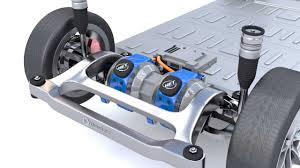
Breaking News
 This roof paint blocks 97% of sunlight and pulls water from the air
This roof paint blocks 97% of sunlight and pulls water from the air
 'Venomous' Republican split over Israel hits new low as fiery feud reaches White House
'Venomous' Republican split over Israel hits new low as fiery feud reaches White House
 Disease-ridden monkey that escaped from research facility shot dead by vigilante mom protecting...
Disease-ridden monkey that escaped from research facility shot dead by vigilante mom protecting...
 Hooters returns - founders say survival hinges on uniform change after buying chain...
Hooters returns - founders say survival hinges on uniform change after buying chain...
Top Tech News
 The 6 Best LLM Tools To Run Models Locally
The 6 Best LLM Tools To Run Models Locally
 Testing My First Sodium-Ion Solar Battery
Testing My First Sodium-Ion Solar Battery
 A man once paralyzed from the waist down now stands on his own, not with machines or wires,...
A man once paralyzed from the waist down now stands on his own, not with machines or wires,...
 Review: Thumb-sized thermal camera turns your phone into a smart tool
Review: Thumb-sized thermal camera turns your phone into a smart tool
 Army To Bring Nuclear Microreactors To Its Bases By 2028
Army To Bring Nuclear Microreactors To Its Bases By 2028
 Nissan Says It's On Track For Solid-State Batteries That Double EV Range By 2028
Nissan Says It's On Track For Solid-State Batteries That Double EV Range By 2028
 Carbon based computers that run on iron
Carbon based computers that run on iron
 Russia flies strategic cruise missile propelled by a nuclear engine
Russia flies strategic cruise missile propelled by a nuclear engine
 100% Free AC & Heat from SOLAR! Airspool Mini Split AC from Santan Solar | Unboxing & Install
100% Free AC & Heat from SOLAR! Airspool Mini Split AC from Santan Solar | Unboxing & Install
 Engineers Discovered the Spectacular Secret to Making 17x Stronger Cement
Engineers Discovered the Spectacular Secret to Making 17x Stronger Cement
Linear Labs Present The HET, A Revolutionary Direct-Drive Motor

It seems electric motors just needed a push to present amazing technical developments. And that this push came from electric cars. Now we see new concepts fairly often, such as the Magnax motor or the plastic electric motor showed recently and this one, which comes from Texas and Linear Labs. It is called HET, or Hunstable Electric Turbine. And it claims to offer at least two times more torque density than the current top permanent magnet motors in the market.
That is just for starter. Linear Labs also states it has three times more power density and delivers 10 percent more range. The engine would also use 30 percent less copper. And that happens precisely due to the advantages the new motor design offers, according to the company.
Linear Labs calls the HET a "3-dimensional circumferential flux 4 rotor machine". That begins to explain the differences it has from a regular motor. First of all, it uses four rotors instead of just one or two.
In other words, "the structure of the HET ensures that all of the magnetic field interactions are fully involved in the production of torque", according to the company. And that makes it much more efficient at lower RPMs than a regular motor.
What is really innovative about this engine is that, when it needs more power and higher RPMs, it just uses an "electronic transmission" to generate that without losses. And that happens precisely due to the additional rotors.



